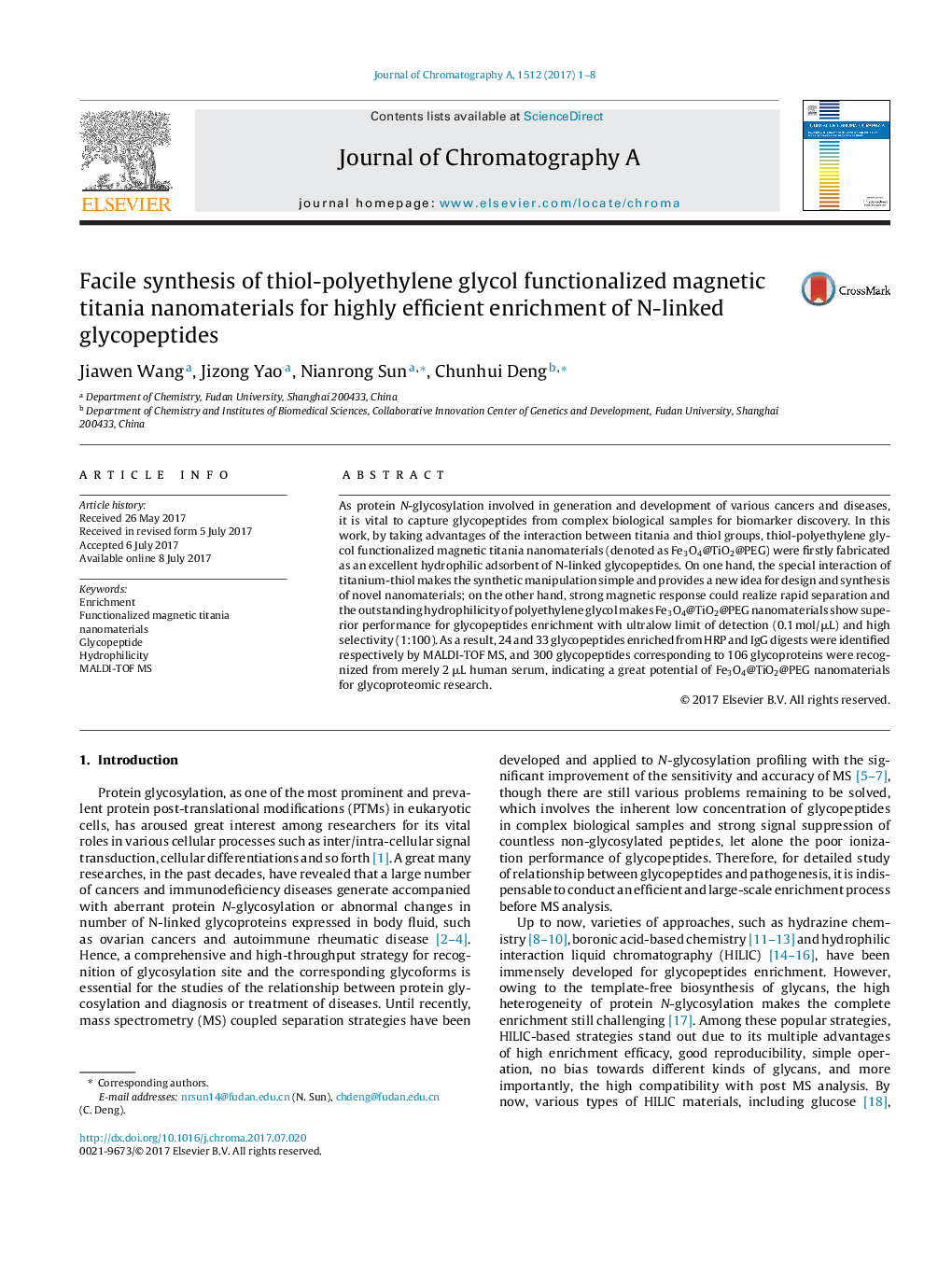| Article ID | Journal | Published Year | Pages | File Type |
|---|---|---|---|---|
| 5134977 | Journal of Chromatography A | 2017 | 8 Pages |
â¢A novel synthesis route for functionalization of thiol group containing compounds through interaction between titanium and sulfhydryl groups.â¢Simple manipulation under mild synthesis conditions.â¢Strong magnetic response for rapid separation from complex matrix.â¢Superior hydrophilicity for highly efficient enrichment of N-glycopeptides in both standard proteins and biological samples.
As protein N-glycosylation involved in generation and development of various cancers and diseases, it is vital to capture glycopeptides from complex biological samples for biomarker discovery. In this work, by taking advantages of the interaction between titania and thiol groups, thiol-polyethylene glycol functionalized magnetic titania nanomaterials (denoted as Fe3O4@TiO2@PEG) were firstly fabricated as an excellent hydrophilic adsorbent of N-linked glycopeptides. On one hand, the special interaction of titanium-thiol makes the synthetic manipulation simple and provides a new idea for design and synthesis of novel nanomaterials; on the other hand, strong magnetic response could realize rapid separation and the outstanding hydrophilicity of polyethylene glycol makes Fe3O4@TiO2@PEG nanomaterials show superior performance for glycopeptides enrichment with ultralow limit of detection (0.1 mol/μL) and high selectivity (1:100). As a result, 24 and 33 glycopeptides enriched from HRP and IgG digests were identified respectively by MALDI-TOF MS, and 300 glycopeptides corresponding to 106 glycoproteins were recognized from merely 2 μL human serum, indicating a great potential of Fe3O4@TiO2@PEG nanomaterials for glycoproteomic research.
